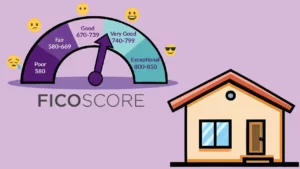Mortgagerateslocal.com – If you have a mortgage, you might be wondering if refinancing is a good option for you. Refinancing is when you replace your current loan with a new one that has different terms and conditions.
Depending on your situation, refinancing can help you save money, pay off your debt faster, access your home equity, or achieve other financial goals.
But refinancing is not always a smart move. It can also cost you money, time, and hassle. You need to weigh the pros and cons carefully and compare different lenders and offers before you decide to refinance your mortgage.
When to refinance your mortgage? By the end of this guide, you will have a clear understanding of how refinancing works and whether it is right for you. Let’s get started!
The Reasons and Benefits of Refinancing
There are many reasons why homeowners choose to refinance their mortgages. Some of the most common ones are:
- To lower the interest rate and monthly payment. If interest rates have dropped since you got your original loan, or if your credit score has improved, you might be able to qualify for a lower rate and reduce your monthly payment. This can save you money on interest and free up some cash flow for other expenses or savings.
- To shorten the loan term and pay off the debt faster. If you can afford a higher monthly payment, you might want to refinance to a shorter loan term, such as from a 30-year to a 15-year mortgage. This can help you pay off your loan faster and save a lot of money on interest over the life of the loan.
- To switch from an adjustable-rate to a fixed-rate mortgage, or vice versa. If you have an adjustable-rate mortgage (ARM), your interest rate can change periodically based on market conditions. This can make your monthly payment unpredictable and increase your risk of paying more interest. If you want more stability and certainty, you might want to refinance to a fixed-rate mortgage, which has a constant interest rate and payment for the entire loan term. On the other hand, if you have a fixed-rate mortgage and you expect interest rates to go down or you plan to move or sell your home soon, you might want to refinance to an ARM, which usually has a lower initial interest rate and payment than a fixed-rate mortgage.
- To tap into your home equity and get cash out. If you have built up enough equity in your home, you might be able to refinance and borrow more than what you owe on your current loan. The difference between the new loan amount and the old loan balance is called cash-out refinance. You can use this cash for any purpose, such as home improvements, debt consolidation, education, or medical expenses. However, cash-out refinancing increases your loan balance and reduces your equity, so you should use it wisely and responsibly.
- To eliminate private mortgage insurance (PMI) or mortgage insurance premium (MIP). If you put less than 20% down when you bought your home, you might be paying PMI or MIP, which are extra fees that protect the lender in case you default on the loan. PMI or MIP can add hundreds of dollars to your monthly payment and thousands of dollars to your total loan cost. If you have gained enough equity in your home, either by paying down your loan or by appreciation, you might be able to refinance and get rid of PMI or MIP, which can lower your monthly payment and save you money.
As you can see, refinancing can have many benefits, depending on your goals and circumstances. However, refinancing also has some drawbacks and costs that you need to consider before you apply. We will discuss them in the next section.
When to Refinance Your Mortgage?
When to refinance your mortgage? There are different types of refinancing options available, depending on your goals and circumstances. Some of the most common ones are:
- Rate-and-term refinancing. This is when you refinance your loan to get a lower interest rate, a different loan term, or both. For example, you might refinance a 30-year fixed-rate mortgage at 6% to a 15-year fixed-rate mortgage at 4%. This can help you save money on interest and pay off your loan faster, but it might also increase your monthly payment.
- Cash-out refinancing. This is when you refinance your loan and borrow more than what you owe on your current loan. The difference between the new loan amount and the old loan balance is called cash-out refinance. You can use this cash for any purpose, such as home improvements, debt consolidation, education, or medical expenses. However, cash-out refinancing increases your loan balance and reduces your equity, so you should use it wisely and responsibly.
- Cash-in refinancing. This is when you refinance your loan and pay down some of your loan balance with your own money. For example, you might refinance a $200,000 loan with a $50,000 cash-in. This can help you lower your loan-to-value ratio (LTV), which is the percentage of your home value that you owe on your loan. A lower LTV can help you qualify for a lower interest rate, eliminate PMI or MIP, or avoid underwater mortgage, which is when you owe more on your loan than your home is worth.
- Streamline refinancing. This is when you refinance your loan with the same lender and with minimal documentation and verification. Streamline refinancing is usually available for government-backed loans, such as FHA, VA, and USDA loans. The main benefit of streamline refinancing is that it can save you time and hassle, as you don’t have to provide income, asset, or credit information, or get a new appraisal. However, streamline refinancing might not offer you the best interest rate or terms, so you should compare it with other options.
Each type of refinancing has its own requirements and eligibility criteria, depending on the lender, the loan type, and the market. Some of the common requirements are:
- A good credit score. Your credit score is a measure of your creditworthiness and your ability to repay your debt. The higher your credit score, the more likely you are to qualify for a lower interest rate and better terms. Generally, you need a credit score of at least 620 to qualify for conventional refinancing, and at least 580 to qualify for FHA refinancing. However, some lenders might have higher or lower credit score requirements, depending on their risk appetite and the market conditions.
- A sufficient income and debt-to-income ratio (DTI). Your income and DTI are indicators of your financial stability and your ability to afford your monthly payment. The higher your income and the lower your DTI, the more likely you are to qualify for refinancing. Generally, you need a DTI of no more than 43% to qualify for conventional refinancing, and no more than 50% to qualify for FHA refinancing. However, some lenders might have higher or lower DTI requirements, depending on your credit score, your loan type, and the market conditions.
- A sufficient equity and loan-to-value ratio (LTV). Your equity and LTV are measures of your ownership stake and your leverage in your home. The higher your equity and the lower your LTV, the more likely you are to qualify for refinancing. Generally, you need an LTV of no more than 80% to qualify for conventional refinancing, and no more than 97.75% to qualify for FHA refinancing. However, some lenders might have higher or lower LTV requirements, depending on your credit score, your loan type, and the market conditions.
These are some of the common requirements and eligibility criteria for refinancing, but they are not the only ones. You should check with your lender and your loan servicer to find out the specific requirements and options for your situation. You should also shop around and compare different lenders and offers to find the best deal for you. We will discuss how to do that in the next section.
Tips for Refinancing
If you have decided that refinancing is a good option for you, you need to follow some steps and tips to make the process smooth and successful. When to refinance your mortgage? Here are some of the steps and tips for refinancing:
1. Check your credit score and report
Your credit score and report are important factors that affect your eligibility and interest rate for refinancing. You should check your credit score and report before you apply for refinancing and make sure they are accurate and up-to-date. You can get a free copy of your credit report from each of the three major credit bureaus (Equifax, Experian, and TransUnion) once a year at AnnualCreditReport.com.
You can also get a free credit score from some websites or apps, such as Credit Karma or Credit Sesame. If you find any errors or discrepancies in your credit report, you should dispute them with the credit bureaus and the creditors as soon as possible. If you have a low credit score, you should try to improve it by paying your bills on time, paying down your debt, and avoiding new credit inquiries.
2. Determine your home value and equity
Your home value and equity are also important factors that affect your eligibility and interest rate to refinance your mortgage . You should have an idea of how much your home is worth and how much equity you have before you apply for refinancing. You can get an estimate of your home value from some websites or apps, such as Zillow or Trulia.
You can also get a more accurate appraisal from a professional appraiser, but this will cost you money. To calculate your equity, you need to subtract your current loan balance from your home value. For example, if your home is worth $300,000 and you owe $200,000 on your loan, your equity is $100,000. The more equity you have, the better your chances of qualifying for refinancing and getting a lower interest rate.
3. Shop around and compare different lenders and offers
One of the most important steps for refinancing is to shop around and compare different lenders and offers. You should not just go with the first offer you get, as you might miss out on a better deal. You should compare at least three to five lenders and offers, and look at the following factors:
- The interest rate and the annual percentage rate (APR). The interest rate is the percentage of the loan amount that you pay in interest each year. The APR is the percentage of the loan amount that you pay in interest and fees each year. The APR is a more comprehensive measure of the loan cost than the interest rate, as it includes the origination and discount points, the closing costs, and other charges. You should compare the APRs of different offers, not just the interest rates, as a lower interest rate might come with higher fees and vice versa.
- The loan term and the monthly payment. The loan term is the length of time that you have to repay the loan. The monthly payment is the amount of money that you have to pay each month toward the loan principal and interest. The loan term and the monthly payment are inversely related, meaning that a shorter loan term usually comes with a higher monthly payment and a longer loan term usually comes with a lower monthly payment. You should compare the loan terms and the monthly payments of different offers, and choose the one that fits your budget and your goals. For example, if you want to save money on interest and pay off your loan faster, you might prefer a shorter loan term and a higher monthly payment. If you want to lower your monthly payment and free up some cash flow, you might prefer a longer loan term and a lower monthly payment.
- The type and features of the loan. The type and features of the loan are the characteristics and options that come with the loan, such as the rate type, the payment type, the prepayment penalty, the lock-in period, and the escrow account. The rate type is whether the loan has a fixed or an adjustable interest rate. The payment type is whether the loan has a regular or an interest-only payment. The prepayment penalty is whether the loan has a fee for paying off the loan early. The lock-in period is the length of time that the lender guarantees the interest rate and the terms of the loan. The escrow account is whether the lender collects and pays your property taxes and insurance on your behalf. You should compare the type and features of different loans, and choose the one that suits your preferences and needs. For example, if you want more stability and certainty, you might prefer a fixed-rate, regular payment, no prepayment penalty, long lock-in period, and escrow account loan. If you want more flexibility and risk, you might prefer an adjustable-rate, interest-only, prepayment penalty, short lock-in period, and no escrow account loan.
- The customer service and reputation of the lender. The customer service and reputation of the lender are the quality and reliability of the lender and its staff. You should compare the customer service and reputation of different lenders, and choose the one that has a good track record and a high level of satisfaction among its customers. You can check the customer service and reputation of the lender by reading online reviews, asking for referrals, contacting the Better Business Bureau, and verifying the lender’s license and accreditation.
4. Apply for the loan and prepare the documents
Once you have chosen the lender and the offer that you want, you need to apply for the loan and prepare the documents. You will have to fill out an application form and provide some personal and financial information, such as your name, address, social security number, income, assets, debts, and credit history.
You will also have to provide some documents to verify your information, such as your identification, pay stubs, bank statements, tax returns, and mortgage statements. You should gather and organize these documents before you apply, as they will speed up the approval process and reduce the chances of errors or delays.
5. Wait for the approval and the closing
After you apply for the loan and submit the documents, you will have to wait for the approval and the closing. The approval is when the lender reviews your application and documents and decides whether to grant you the loan or not. The closing is when the loan is finalized and the funds are disbursed. The approval and the closing can take anywhere from a few days to a few weeks, depending on the lender, the loan type, and the market conditions.
During this time, you should stay in touch with the lender and the loan officer, and respond to any requests or questions that they might have. You should also avoid making any major changes to your credit or financial situation, such as applying for new credit, changing jobs, or making large purchases, as they might affect your eligibility or interest rate for refinancing.
You should also review the loan documents carefully and make sure they match the offer that you agreed to. If you find any errors or discrepancies, you should notify the lender and the loan officer immediately and ask for corrections. You should also be prepared to pay the closing costs and sign the loan documents at the closing.
Conclusion
Refinancing your mortgage is a big decision that can have a significant impact on your finances and your future. You should consider the reasons and benefits, the costs and risks, the types and requirements, and the steps and tips for refinancing before you apply. You should also consult a financial advisor or a mortgage broker to help you make the best decision for your situation.




